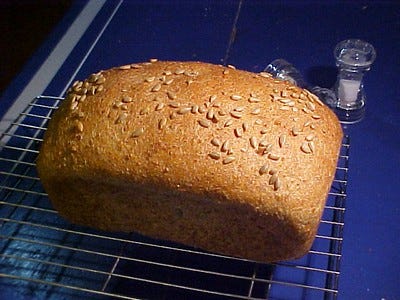#61: CIVICS 101: The Legislative Branch
Q&A #61: What is the Committee of the Whole?
Our American Government
Our American Government is a small book published by the House of Representatives for citizens and those who seek a greater understanding of the American interpretation of democracy. It follows a question-and-answer format and covers a broad range of topics dealing with the three branches of our Government, the electoral process, and the role of political parties.
The Savvy Citizen is reproducing the 169 questions-and-answers through a series of posts called Civics 101. Each post will contain the Q&A as well as some additional commentary to add historical context, fun facts, or anything we believe will add to our collective understanding of these topics.
Think of it as your adult Civics class but without the test!
Let’s keep at it.
SECTION: The Legislative Branch: The Congress
Congressional Rules and Procedures
Q&A #61: What is the Committee of the Whole?
The Committee of the Whole House on the State of the Union (or Committee of the Whole) is a hybrid form of the House itself. Technically, it is a committee of the House on which all Representatives serve and that meets in the House Chamber. However, it is governed by different rules of procedure than the House meeting as itself. The concept of the ‘‘grand committee’’ has been carefully developed from the early days of the House and in modern practice gives the House a more expeditious means for considering the complex and often controversial legislation referred to it.
Historically, it was devised by the English House of Commons to give them the ability to debate privately and not have their votes committed to record. The Committee of the Whole in the U.S. House permitted recorded votes beginning in January 1971.
The House resolves itself into a new Committee of the Whole for the consideration of each bill. A specific Committee of the Whole is dissolved when it ‘‘rises and reports with a recommendation,’’ to the House. When the Committee rises after not having resolved the matter committed to it, that bill is carried on the calendar as ‘‘unfinished business of the Committee of the Whole’’ until consideration has been finally completed.
When a bill or resolution is considered in Committee of the Whole, there first is a period of time, usually one hour, for general debate on the merits of the bill or resolution. If enforced, a quorum in the Committee is 100 Members (whereas 218 are required in the House). After general debate, Members may offer amendments, with each speech for or against an amendment being limited to five minutes. If a recorded vote is desired on any amendment, the call for the vote must be seconded by 25 Members (whereas 44 or more are required in the House). When the amending process is completed, the Committee of the Whole ‘‘rises,’’ and reports its actions to the House through the Speaker. The House then votes on whether or not to adopt the amendments recommended by the Committee of the Whole, and then votes on final passage of the measure, as amended.
The Senate ceased using the Committee of the Whole as a parliamentary forum for debate in 1986.
My Thoughts
You know I love the Congressional Research Service! If you want a more detailed discussion of this interesting Committee, you read it here.
Back next time with Q&A #62: What are the duties of Parliamentarians?
Meanwhile, don’t forget that we’re organizing the post links on a single page available here.
xo,
Kelley for the Savvy Citizen Team
March 13, 2025




